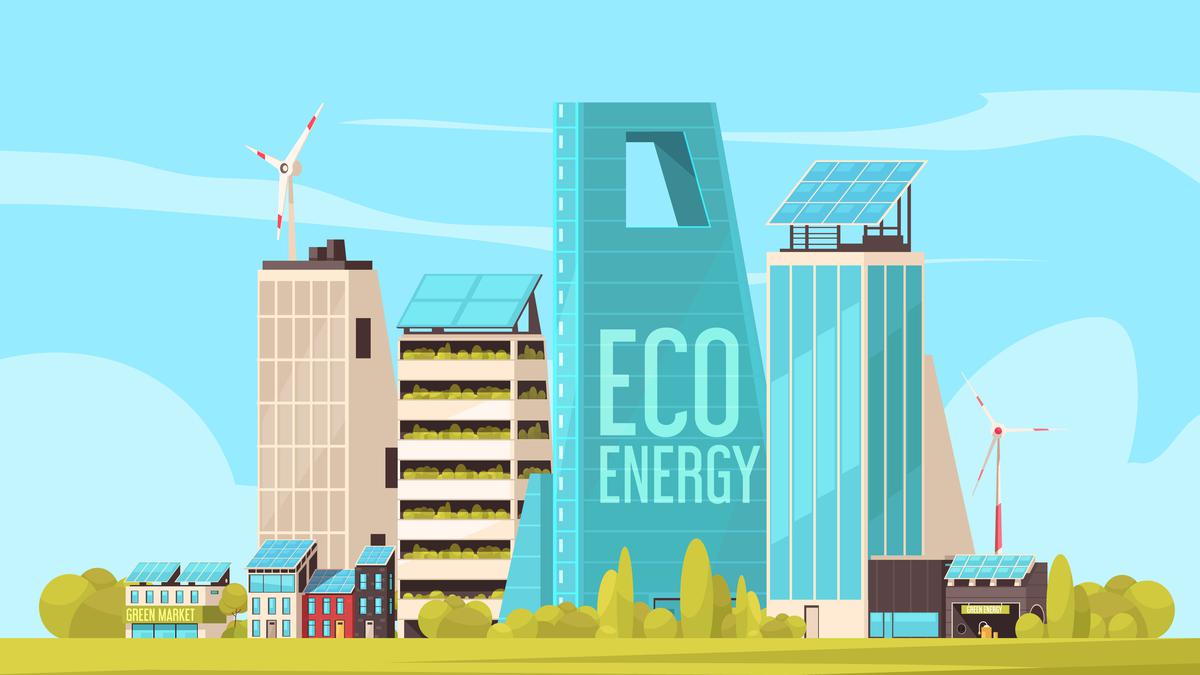
Making the most of green
The Hindu
Green building practices offer myriad benefits to create a sustainable future, reducing energy consumption, plastic waste & resource wastage while enhancing occupant well-being.
In the midst of mounting concerns surrounding climate change and environmental degradation, the real estate industry plays a crucial role in creating a sustainable future. Green building practices offer a myriad benefits that extend beyond conventional profit margins. By embracing these practices, we have the power to construct a built environment that not only mitigates our ecological impact but also enriches our lives and fosters thriving communities.
Green building practices encompass designing, constructing, and operating buildings in ways that maximise resource efficiency, minimise environmental impact, and prioritise the wellbeing of its occupants. They rely on a wide range of strategies, including energy-efficient design, utilisation of renewable materials, efficient waste management, water conservation, and incorporation of eco-friendly elements into urban spaces.
While cost savings and increased property value are significant advantages, the true power of these practices lies in their ability to cultivate a holistic and harmonious relationship between humans and the environment.
Reducing energy consumption holds a pivotal role in curbing global warming. A United Nations report states that the construction and operation of buildings accounted for a staggering 37% of global energy-related CO2 emissions in 2020, in spite of the global lockdowns and closures due to the pandemic. By embracing green building practices, we can significantly curtail energy consumption and greenhouse gas emissions, paving the way for a sustainable future. Incorporating innovative design techniques and renewable energy sources enables buildings to reduce their carbon footprint and enhance community resilience in the face of a changing climate.
Addressing the plastic waste crisis has become an important aspect of the United Nations’ Sustainable Development Goals. Green building practices not only demonstrate environmental responsibility but also represent a vital step towards reducing plastic pollution. A recent report by the United Nations Environment Programme (UNEP) outlines the potential to reduce plastic waste by 80% through existing technologies and significant policy changes by 2040. Embracing green building practices allows the real estate sector to actively contribute to these goals by promoting reuse, recycling, and alternative packaging materials while fostering a shift towards a circular economy.
Resource efficiency takes centre stage in green buildings through the integration of water-saving technologies, efficient insulation, and intelligent lighting and heating systems. By minimising wastage and conserving resources, green buildings not only curtail operational costs but also champion responsible resource management, effectively addressing global water and energy scarcity challenges. The concept of building green extends beyond efficiency, emphasising the optimisation of local materials and ecology while simultaneously reducing power, water, and material requirements. For instance, The Energy and Resources Institute (TERI) suggests that by embracing green building concepts in Indian urban areas, a significant 8,400 megawatts of power could be saved annually, thereby providing lighting for 550,000 homes each year.
In emphasising the health and well-being of its residents and occupants, green buildings prioritise the improvement of indoor air quality, maximisation of natural light, and integration of nature into their design. These enhancements not only increase productivity and alleviate stress but also promote a healthier lifestyle. Research conducted by the U.S. Green Building Council (USGBC) reveals that approximately one-third (32%) of Americans have personally encountered health problems resulting from inadequate living environments. Green buildings address this concern by employing toxin-free materials, ensuring proper air ventilation, and incorporating air-purifying plants. These measures effectively enhance physical health, providing comfort, and mitigating symptoms of allergies and respiratory conditions like asthma in both residential and work settings.













